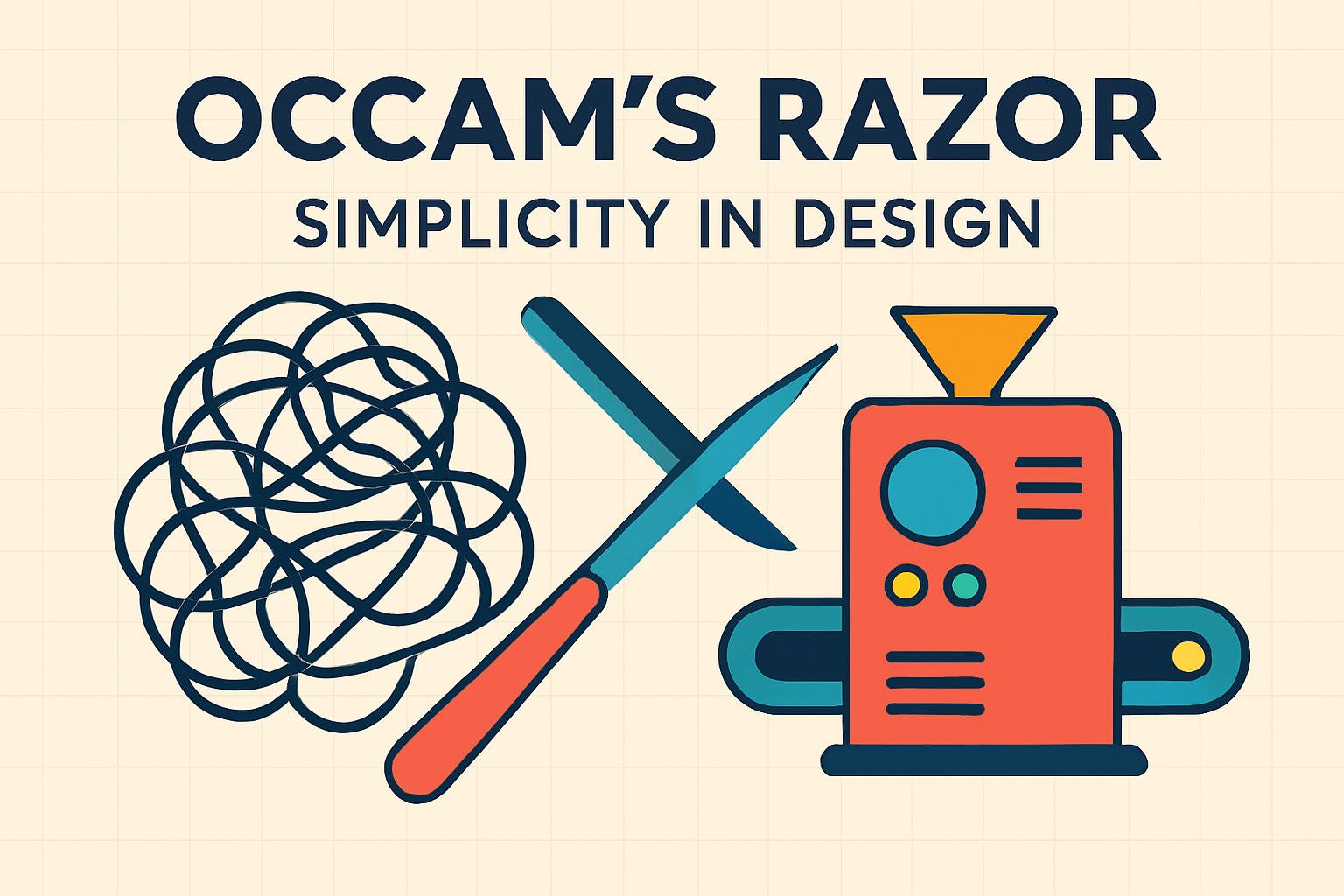Module 10: Occam’s Razor – Simplicity in Design

Welcome to Module 10, where we explore a philosophical principle with profound implications for design: Occam's Razor. Named after the 14th-century philosopher William of Ockham, this principle, in its simplest form, states that "entities should not be multiplied without necessity." In the context of design, Occam's Razor champions simplicity, suggesting that among competing hypotheses or solutions that predict equally well, the one with the fewest assumptions or the simplest explanation is usually the best. This module will delve into how this principle translates to creating cleaner, more efficient, and user-friendly designs. We will discuss the importance of avoiding unnecessary complexity, its relationship to minimalist design trends, and how striving for simplicity can lead to more elegant and effective solutions. By understanding and applying Occam's Razor, you can learn to strip away the superfluous and focus on the essential, resulting in designs that are both powerful and easy to understand.
The Simplest Solution is Often the Best
At its core, Occam's Razor is a problem-solving principle that encourages us to favor simplicity. When faced with multiple ways to design a feature, a layout, or an entire system, the approach that achieves the desired outcome with the least complexity is often the most robust and user-friendly. This doesn\t mean that simple is always easy to achieve; often, arriving at a truly simple solution requires deep understanding, careful thought, and rigorous iteration. However, the pursuit of simplicity yields significant benefits. Simpler designs are generally easier for users to learn and understand, reducing cognitive load and minimizing the potential for confusion or errors. They are often quicker to develop, easier to maintain, and more adaptable to future changes. A complex design with many moving parts, unnecessary features, or convoluted workflows can quickly become unwieldy, frustrating for users, and difficult to manage from a development perspective. Occam's Razor reminds us to constantly question whether each element, feature, or step is truly necessary and whether there's a more straightforward way to achieve the same goal.
Avoiding Unnecessary Complexity
One of the primary applications of Occam's Razor in design is the conscious effort to avoid unnecessary complexity. This means critically evaluating every design decision and asking: "Does this element add real value? Does it solve a genuine user problem? Can this be achieved in a simpler way?" It's easy for designs to become bloated over time as new features are added or as different stakeholders request various additions. This is often referred to as "feature creep." Without a guiding principle like Occam's Razor, interfaces can become cluttered, workflows can become convoluted, and the user experience can suffer significantly.
To avoid unnecessary complexity, designers should focus on the core functionality and the primary goals of the user. Prioritize features that deliver the most value and consider whether less critical features can be streamlined, hidden behind progressive disclosure, or even eliminated entirely. Use clear and concise language. Strive for visual clarity by removing unnecessary ornamentation or visual noise. Ensure that navigation is intuitive and that users can accomplish their tasks with the fewest possible steps. By consistently challenging complexity and seeking simpler alternatives, designers can create products that are more focused, efficient, and enjoyable to use.
Relating to Minimalist Design Trends
Occam's Razor aligns closely with the principles of minimalist design, a popular aesthetic and philosophical approach that emphasizes simplicity, functionality, and the removal of extraneous elements. Minimalism in design is characterized by the use of ample white space, clean lines, a limited color palette, and a focus on essential content and functionality. The mantra "less is more" is central to minimalism, echoing Occam's Razor's preference for simplicity.
Minimalist designs aim to reduce visual clutter and cognitive load, allowing users to focus on what truly matters. By stripping away unnecessary decoration and features, minimalist interfaces can feel more calming, elegant, and easier to navigate. This approach is not just about aesthetics; it's about enhancing usability by making information more accessible and interactions more straightforward. While not all designs need to be strictly minimalist, the underlying principles of focusing on the essential, eliminating the superfluous, and striving for clarity are valuable lessons that Occam's Razor reinforces. Whether adopting a fully minimalist style or simply seeking to streamline a more complex design, the goal is to achieve a balance where every element serves a clear purpose and contributes to a cohesive and effective user experience.
Applying Occam's Razor in your design process encourages a disciplined approach, pushing you to justify each design choice and to constantly seek clarity and efficiency. It's a reminder that often, the most elegant and effective solutions are found not in adding more, but in thoughtfully taking away.